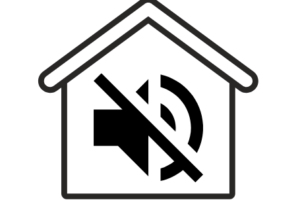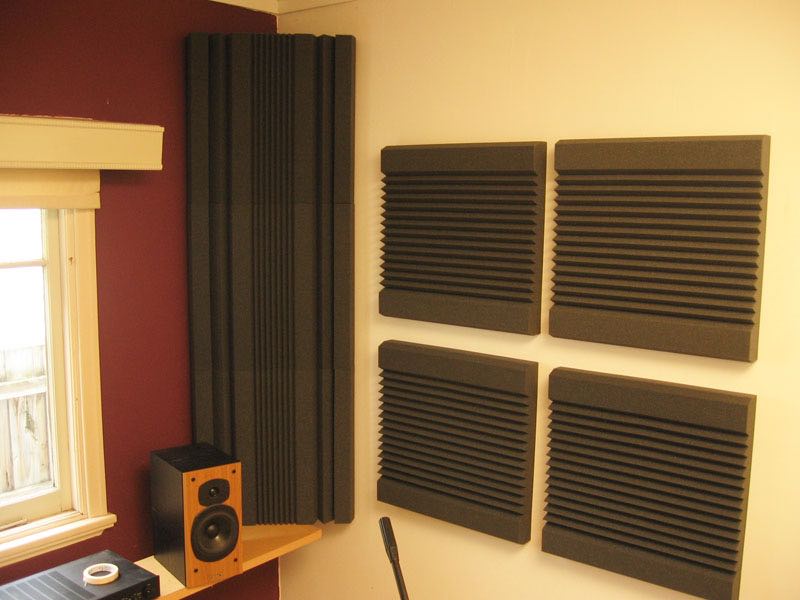Whether you’re a musician, a youtuber, a podcaster or just someone who likes some peace and quiet around the house- one product that you must have come across at some point is soundproof foam.
To clear up a common misconception, these aren’t really meant for soundproofing. But if you are looking to reduce echoes or reverberation inside your room, then you need acoustic foam.
If your room has plenty of hard surfaces, like in most bathrooms, the acoustics would be really bad with a lot of reverberations in the room which make it seem noisier than it is.
Having some softer surfaces that can absorb sound a bit can make the room seem much quieter.
This is exactly the job that acoustic foam does. It absorbs sound and does not allow reverberations to occur that easily.
Here are my recommendations for acoustic foam:
Best Overall Pick: This product by Foamily is the thickest acoustic foam on the market right now, which is the biggest reason why it’s my top pick. Check out the latest price on Amazon
Best Budget Buy: Not the best solution on this list, but if you’re on a budget, then this product(aff. link to Amazon) will work just fine
Best For Low Frequency Sounds: Foam bass traps are a quick win, and a good investment to block out those annoyingly persistent bass sounds. I recommend this product on Amazon, and I recommend you get at least a set of 4- one for each corner of the wall.
The Only Fire Rated Acoustic Foam: Putting the wrong soundproofing material can be a real fire hazard, and while none of the products on this list are hazards, only this product by Soundproof Store has a Class A fire rating.
What sort of results can you expect?
I can certainly say that there will be a noticeable improvement in sound quality, regardless of which product you buy on this list.
Needless to say, the more wall area you cover with foam, the lesser reverberations there will be. Now, that will cost a small fortune that most of us can’t afford, but aim to cover at least 25% of the wall area in your room.
Acoustic foam is only good for stopping mid to high range frequency reverberations(>150 Hz). If you want to do something about bass frequencies, then consider getting bass traps. Bass traps are made of different materials, but the kind I’m recommending are made out of foam. They are thicker than normal acoustic foam, but keep in mind that they aren’t really thick enough to stop the truly bass frequencies.
Proper bass traps(such as a helmholtz resonator) work very well but are also quite expensive. I don’t recommend getting them unless you’re building a professional recording studio.
The middle of the road solution, which will suit most, is to buy the foam bass traps(see link above)
What Should You Know About Buying Acoustic Foam?
It’s best to buy acoustic foam online since you generally get it cheaper than retail. It’s usually sold in two sizes- either you get a huge block of foam or you get a pack of small sized tiles.
If you don’t get the tile sized, you will get a block of foam that is curled up into a ball or transportation. No need to worry about the shape- just unpack it and let it be – it will conform to it’s normal shape and size within a few days.
Most acoustic foam products have wedge patterns in order to break up the noise. These wedges however, are rather convenient places for dust to settle in. Nothing a quick vaccum can’t get rid of though.
Lastly, the quality control on these products is not always on point. You may receive acoustic foam that is slightly off from the exact dimensions that are advertised. Unfortunately, there doesn’t seem to be a brand that has risen above this issue and provided 100% customer satisfaction in this regard.
Where to place acoustic foam?
You can easily save the cost of buying an extra set of acoustic foam tiles by placing the existing ones intelligently around your room.
Say you’re trying to get better sound quality from your TV.
The best thing to do would be to first, place acoustic foam on the wall behind the TV. Remember to cover at least 25% of the wall. If you have some leftover then on the walls adjacent to it and if you still have some more, then on the ceiling.
As for Bass traps they are supposed to go in the corners of the room, since that is where low frequencies sounds gather the most, and a lot of sound reflections occur as well.
How to apply acoustic foam?
If you live in a rented accommodation or are particular about NOT ripping out your wallpaper (and maybe even drywall), then don’t glue the foam right onto your wall.
There also are a lot of reviews online that suggest using a spray adhesive, or a staple gun. These will definitely ruin your walls as well, and you won’t have the luxury of taking it down and putting it in a different position if you change your mind.
Instead, I recommend you use command tape- probably the easiest method I could find online and also ensures that you don’t ruin your walls- you can easily remove the tape and place the foam elsewhere if you decide.
If you are putting up acoustic tiles separately, then you can just apply the medium sized command tape onto the foam directly, about three small strips- one down the middle and two down the sides should do the trick.
If you are putting them up together in a grouping, or are using just a singular, large piece of foam, then you should probably stick it all onto a piece of cardboard first that roughly has the same dimensions as the foam.
You’ll want to use something like the Loctite 200 High Performance Spray Adhesive or 3M Hi-Strength Spray Adhesive for this step. In fact, it’s okay if the cardboard is a little bit smaller in dimension than the foam, as it will sit flush with the wall and you won’t even notice it’s there.
Once you’ve glued the foam onto the cardboard, it’s time to stick the cardboard on the wall. For this step, use these larger command picture and frame hanging strips.
Similarly, you can directly attach the bass traps to the corners of your walls with some command tape. It’s best to cover the top and bottom corner of at least one wall, which is why I recommend you buy a minimum of 4.


